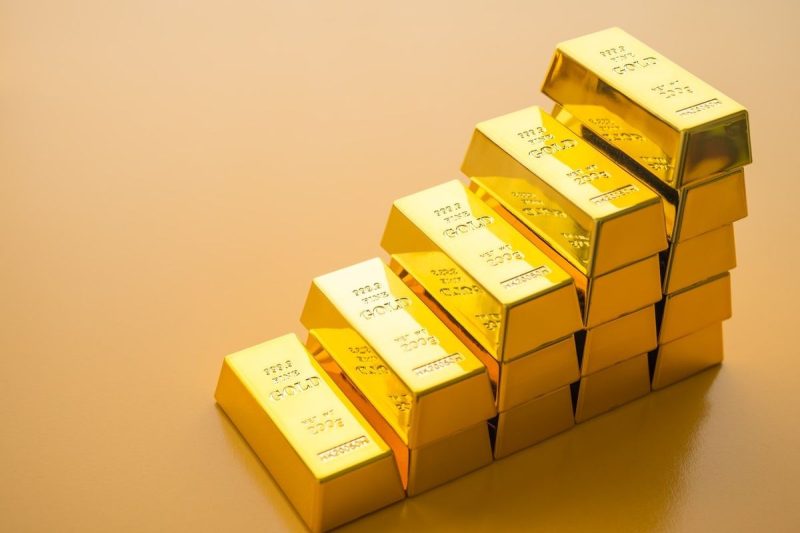The World Gold Council (WGC) has released its latest gold demand trends report, highlighting a record quarterly average price of US$2,050 per ounce for the yellow metal on the back of strong demand.
This represents a substantial 10 percent increase year-on-year and a notable 5 percent rise quarter-on-quarter, culminating in the precious metal reaching new heights and closing the three month period at US$2,214.
“It’s really something that we’re keeping a close eye on, and as you can see, we have moments when big potential (and) opportunity develop, for example strong messaging around potential for rate cuts,” he added.
The WGC’s report highlights several notable trends in gold demand during the first quarter of 2024. Despite fluctuations in different segments, the period witnessed a robust gold market. Mine production saw a 4 percent year-on-year increase to reach 893 tonnes, setting a first quarter production record. Additionally, recycling responded to higher prices, surging by 12 percent year-on-year to 351 tonnes, marking the highest quarter of recycling supply since Q3 2020
Western and eastern investors demonstrated contrasting behaviors, with western gold buying remaining strong but met with profit-taking, while eastern markets exhibited strong buying during the price surge.
The report forecasts a positive outlook for the gold sector in 2024, driven by central banks and retail investment. Central banks continued their trend of net gold purchases, adding 290 tonnes (net) to official holdings in Q1. Moreover, retail investment is expected to remain robust, contributing to a strong year for gold.
Q1 gold investment trends reflect global market volatility
The first quarter of 2024 painted a complex picture marked by significant fluctuations in various sectors.
Investment in gold during Q1, excluding over-the-counter (OTC) transactions, saw a notable decline of 28 percent year-on-year, totaling 199 tonnes. This drop was primarily driven by substantial outflows from gold exchange-traded funds (ETFs), which overshadowed modest growth in bar and coin demand.
“It’s about 6 percent of the investment market worldwide. So while it gets a lot of attention and it’s very easy to track the net flows in the ETF market, it’s just a small element that people need to pay attention to,” noted Cavatoni.
Holdings of global gold ETFs experienced a sharp decline of 114 tonnes during the quarter, amounting to a decrease of US$6 billion. Despite this significant outflow, assets under management (AUM) reached their highest level in nearly two years, totaling US$222 billion, thanks to the robust performance of gold prices.
Bar and coin investment, however, bucked the overall downward trend in gold investment, posting a modest 3 percent year-on-year increase to 312 tonnes. This increase was driven by buoyant demand for small gold bars, particularly in Asia, which offset a slump in demand for gold coins. The divergence in investment behavior between western and eastern markets was evident, with profit-taking by western investors contrasting with consistent investment demand in Asia.
“Now, what’s been playing out has been very clearly a lot of western investors anticipating and looking for that trend in terms of where rates are going to head and the dollar strength,” he added.
Over-the-counter (OTC) investment, which includes transactions outside of traditional exchanges, remained a significant contributor to total demand and played a key role in driving gold prices to record highs in March.
OTC investment totaled 136 tonnes in Q1, maintaining an average of 120 tonnes per quarter since the beginning of 2023. The opaque nature of OTC transactions makes estimating and attributing this investment challenging, but indicators such as net long positions held by money managers suggest substantial activity in this sector.
Looking at specific regions, European gold ETFs lagged behind in Q1, experiencing a 4 percent decline in holdings. North America saw the largest tonnage decline in ETF holdings, primarily in January and February, with modest inflows observed in March. Similarly, European-listed ETFs saw outflows driven by adjustments in monetary policy expectations and rallying stock markets.
In contrast, Asian-listed funds continued to attract inflows for the fourth consecutive quarter, with China leading the increase amid a weakening local currency and poorly performing domestic equity markets.
China also witnessed a surge in bar and coin demand, reaching its highest quarterly total in over seven years.
Securities Disclosure: I, Giann Liguid, hold no direct investment interest in any company mentioned in this article.

